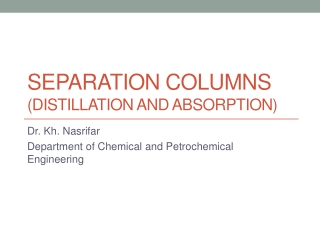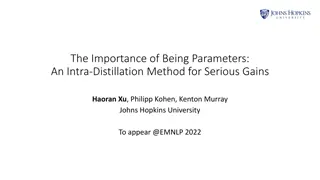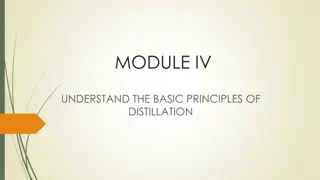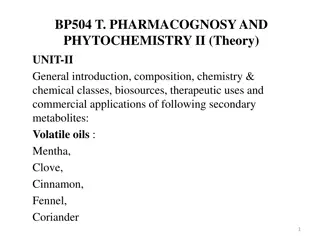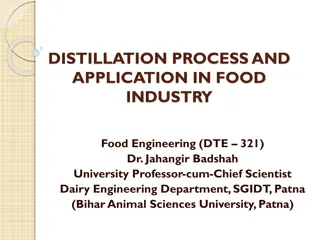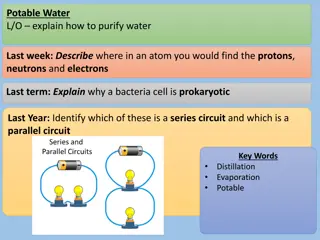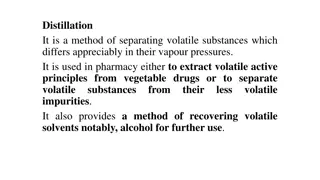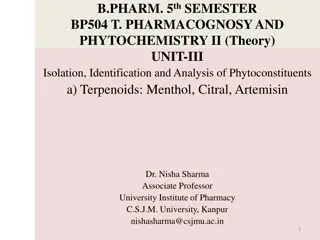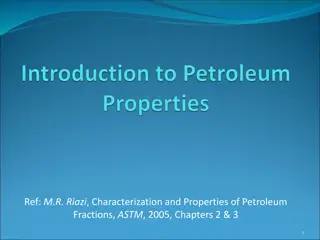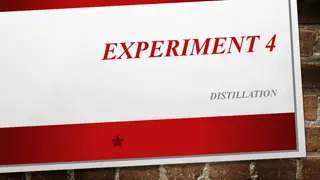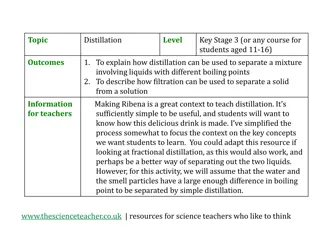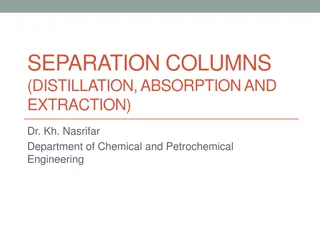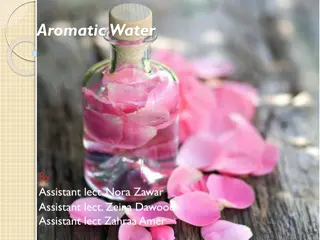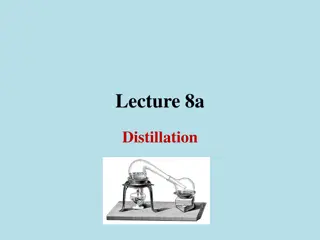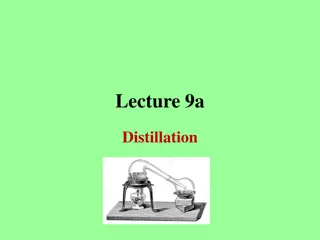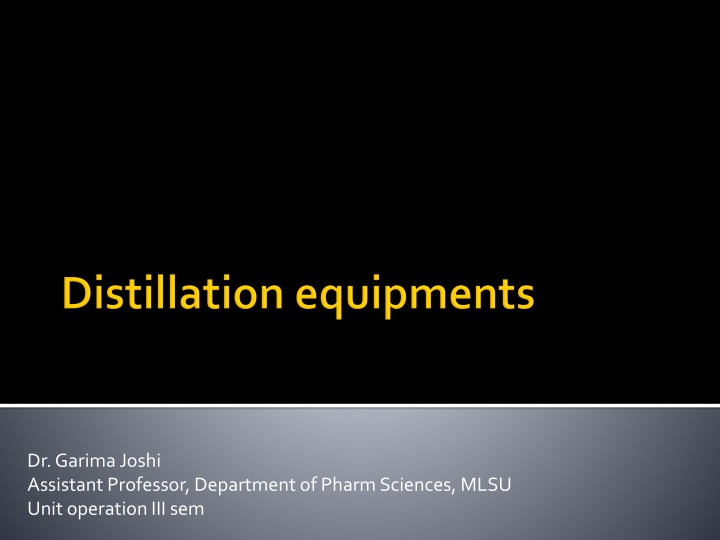
Distillation Methods and Equipment in Laboratory Settings
Explore the process of distillation, including simple, flash, vacuum, molecular, fractional, azeotropic, steam, destructive, and compression distillation. Learn about the different components involved such as the vaporizing chamber, condenser, and distillate collector. Discover various types of condensers and receivers used in distillation processes.
Download Presentation

Please find below an Image/Link to download the presentation.
The content on the website is provided AS IS for your information and personal use only. It may not be sold, licensed, or shared on other websites without obtaining consent from the author. If you encounter any issues during the download, it is possible that the publisher has removed the file from their server.
You are allowed to download the files provided on this website for personal or commercial use, subject to the condition that they are used lawfully. All files are the property of their respective owners.
The content on the website is provided AS IS for your information and personal use only. It may not be sold, licensed, or shared on other websites without obtaining consent from the author.
E N D
Presentation Transcript
Dr. GarimaJoshi Assistant Professor, Department of Pharm Sciences, MLSU Unit operation III sem
STILL : It is a vaporizing chamber and used to place the material to be distilled. The still is heated by a suitable means for vaporization of the volatile constituents. On laboratory scale round bottom flasks made of glass are used so that the progress of the distillation can be noticed. A condenser is attached to the still using appropriate joints. A trap is inserted between distillation flask and condenser.
Used to condense the vapor It is kept cold by circulating water/air through jacket. Types: Single-surface condensers -Straight Tube - Bulb type -Spiral -Coiled type Double-surface condensers Multi-tubular condensers The condenser is connected to a receiver through a suitable adapter
It is used to collect the distillate. It may be a simple flask. It immersed in ice-bath to minimize loss of volatile matter. Florentine receivers are used for the separation of oil and water. Types of Florentine receivers : Type-I :-for separation of oil heavier than water. Type-II :-for separation of oil lighter than water
Simple Distillation (Differential distillation) II. Flash Distillation (Equilibrium distillation) III. Vacuum distillation (distillation under reduced pressure) IV. Molecular Distillation (Evaporation distillation or short path distillation.) V. Fractional Distillation (Rectification) VI. Aezotropicand extractive Distillation VII. Steam Distillation VIII. Destructive Distillation IX. Compression Distillation
Simple distillation is a process of converting a single constituent from a liquid (or mixture) into its vapour, transferring the vapour to another place and recovering the liquid by condensing the vapour, usually by allowing it to come in contact with a cold surface. This process is known differential distillation, as distillation is based on the differences in volatilities and vapour pressures of the components in the mixture.
Liquid boils when its vapourpressure is equal to atmospheric pressure. Simple distillation is conducted at its boiling point. The higher the relative volatility of a liquid, the better is the separation by simple distillation. Heat is supplied to the liquid so that it boils. The resulting vapour is transferred to a different place and condensed.
It consists of a distillation flask with a side arm sloping downwards. Condenser is fitted into the side arm by means of a cork. The condenser is usually water condenser, i.e., jacketed for circulation of water. The condenser is connected to a receiver flask using an adapter with ground glass joints. On a laboratory scale, the whole apparatus is made of glass.

